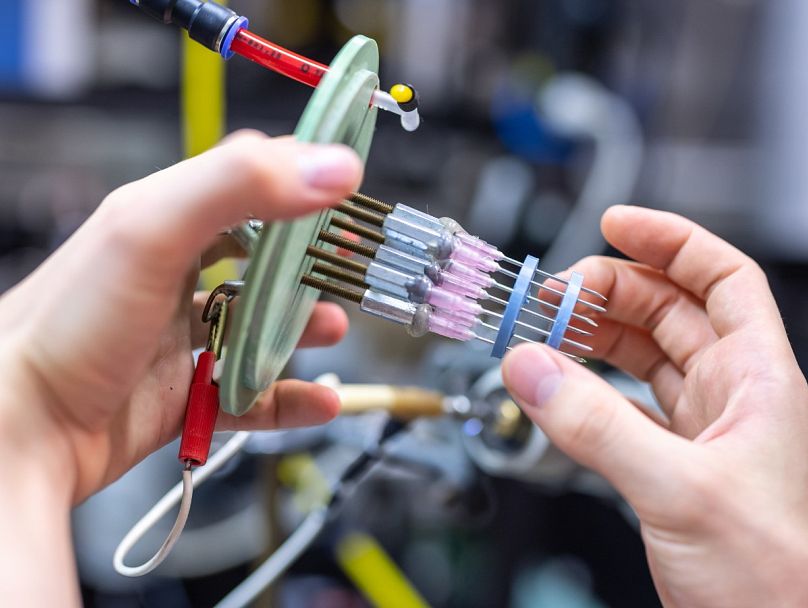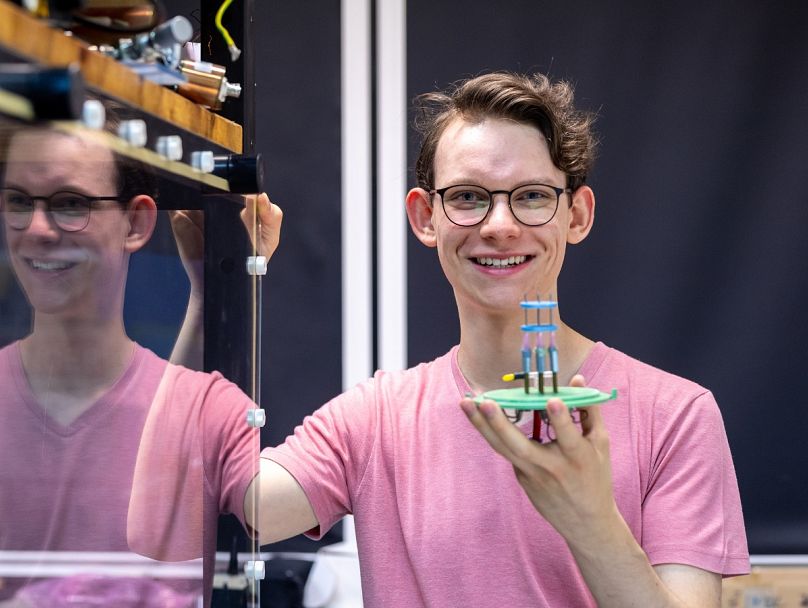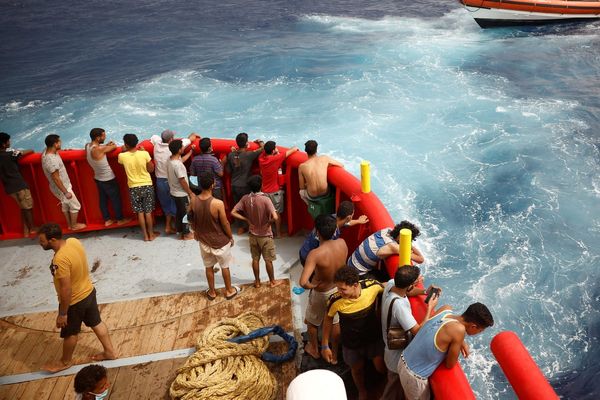
Two teenagers have been named as the European winners of The Earth Prize 2025 for their groundbreaking innovation that promises safer drinking water for all.
18-year-old Tomáš Čermák from Czechia and 19-year-old Anna Podmanická from Slovakia developed a unique filtration device they call PURA.
They are the first from either Czechia or Slovakia to win the Earth Prize.
“I couldn’t believe it,” Tomáš tells Euronews Green. “I’m still processing that out of all those thousands of proposals, ours was picked as the best in Europe.”
Since 2021, The Earth Prize has been empowering the next generation with the tools they need to make a difference. As well as funding of $100,000 (€90,600) to scale up their project, winners also receive one-to-one mentoring and learning resources.
How does the winning clean drinking water innovation work?
Tomáš had been working extensively with cold plasma (AC corona) to destroy pollutants and antibiotic-resistant bacteria. Anna was researching water purification through photocatalysis - using light energy to fuel a chemical reaction. By bringing these two specialisms together, they were able to create PURA.

Plasma is already proven to be effective in water purification. When it interacts with water, plasma generates various small reactions that combine to break down organic pollutants and effectively inactivate bacteria, viruses and other pathogens.
Photocatalysis also has potential for purification. Using light energy like sunlight, reactions are stimulated that break down harmful organic pollutants and damage the cell walls of microorganisms like bacteria.
Anna and Tomáš are the first to bring these two schools of research together into one product. Their prototypes are proving effective at purifying water on a small, household scale.
With the help of the Earth Prize, the team is working to develop a much larger prototype, capable of filtering more water.
How polluted is Europe’s drinking water?
The European Environment Agency reported last year that less than 40 per cent of Europe’s groundwaters are currently healthy. One in four groundwater bodies are chemically contaminated, despite providing two-thirds of Europe’s drinking water.
Among the pollutants are some long-lived heavy metals like mercury, as well as so-called ‘forever chemicals’ collectively known as PFAS, and various pharmaceuticals.
While most water treatment plants are capable of filtering out heavy metals, they are ineffective at removing drugs and ‘forever chemicals’.
Perhaps the most worrying persistent pollutants are antibiotics. Sulfonamides, tetracyclines, and quinolones have all been detected in European drinking water.
Resistant bacteria enter wastewater systems through discharge from pharmaceutical companies, healthcare facilities, and even human waste. Hospital wastewater is also a significant source of antibiotic contamination.
In aquatic ecosystems, antibiotic residues cause the spread of antibiotic-resistant genes by selectively favouring the bacteria that survive. As they reproduce, they spread these genes to other bacteria, leading to the emergence of ‘superbugs’ that antibiotics struggle to tackle.
Conventional wastewater treatment processes are designed to remove larger particles, pathogens, and organic matter, but they are not designed to target and remove antibiotics.
Antibiotic resistance is projected to cause 10 million deaths annually by 2050, and is considered one of the most pressing challenges facing global healthcare.
What’s next for the water purifying invention?
As the European winners of the Earth Prize, Tomáš and Anna will receive $12,500 (€11,332) to scale up their idea into a larger prototype.
“At the moment, we’re able to process milliliters and litres of water,” Tomáš explains. “We want to get to the stage where we can handle dozens of litres.”
Ultimately, the goal is to scale the technology so it can be used in wastewater treatment plants, tackling pollution at its source.

While that’s going to take time, the next big event for the young scientists will come later this month, when the global winners of The Earth Prize are announced. Timed to coincide with Earth Day, the big reveal will come on 22 April.
“My hopes are high,” says Tomáš of the international competition. “I’m trying to mobilise everyone and to really communicate and explain our solution. It’s not an easy concept to explain in simple terms, but I want to continue to convey the idea.
“I’m very hopeful. I think we can do this.”
Public voting for the global winner opens on Sunday, 13 April, and closes on 22 April. Cast your vote for the most innovative idea at The Earth Prize website.







